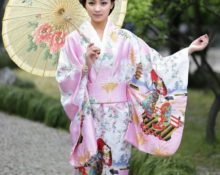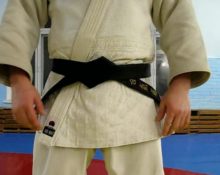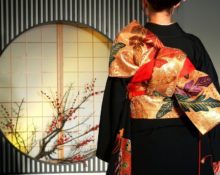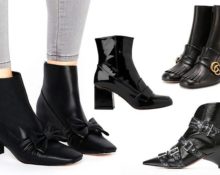Japanese traditional costume and its modern versions are exciting the world's fashion catwalks. Allow yourself to be inimitable in 2019, buy a kimono dress and learn how to use it correctly. There is simply no way without the last point, because in the Land of the Rising Sun there is a culture of wearing clothes. If you don’t know it, you won’t be able to build a successful image.
Japanese style details
You won’t put on makeup like a geisha, and those around you are unlikely to support you if you decide to do so, but in general You can't wear a kimono without makeup. If you want to get closer to the Asian style, then try:
 give your eyes an almond shape;
give your eyes an almond shape;- make them larger and more expressive;
- do not use foundations in dark and yellow shades (in Japan, a white complexion is still in fashion, and all yellow shades are undesirable).
Treat your hair according to your outfit. If it is closer to the canonical version, then use kanzashi and ordinary hairpins. A European dress that imitates a kimono does not require a high and richly decorated hairstyle.You can leave your hair loose or remove it as usual.
Also try not to get carried away with decorations. You can decorate your head and hair as you wish, but do not wear sets of costume jewelry or jewelry. Asian ethno style involves incredibly complex and expressive prints on clothes. Trying to interrupt or complement such a design with a necklace or beads is a waste of time.
Kimono dress and its features
The cut of the kimono is similar to a robe, but what distinguishes it from the latter is, among other things, the incredible width of the sleeves. The part of the traditional outfit is so large that girls have to carry it in their hands. Otherwise, it will simply drag along the floor, which is unacceptable for several reasons. One of them is Japanese frugality. Classic kimonos are made from natural, high-quality and very skillfully finished materials, so they are expensive. To spoil such a thing by contact with asphalt and ground is blasphemy.
Another noteworthy point is lack of fasteners. The traditional outfit has no ties, buttons or zippers. Clothes are secured to the body using a wide and long ribbon - obi. (married women at home and in everyday life can afford a short belt, but in other cases the accessory must be long). Moreover, according to Japanese standards, it should encircle almost the entire space between the waist and chest, covering both zones.
Modern European girls do not have to follow this rule. They has the right to place the obi exclusively around the waist or under the chest. In the first case, the kimono will have a standard waistline, in the second - with a high waistline.The option of lowering the belt placement is excluded, as this will lead to the opening of the décolleté area, and in general this method of fixation was used exclusively by Japanese men.
Important! When tying a real obi - a wide ribbon that acts as a belt - do not place the knot in the front. This placement is typical for Japanese courtesans (not geisha or maiko, but oiran, specializing exclusively in the bodily pleasure of men).
In addition to traditional versions of the kimono, there are also European variations of the outfit. Such clothing quite often is not a robe, but is a one-piece dress with a pronounced waistline and a special type of sleeves. The style is complemented by traditional Japanese patterns. Their examples:
- clouds;
- butterflies;
- heron, sparrow;
- lion, deer;
- celestial bodies (sun, stars, moon);
- calligraphic marks (usually placed on the collar and edges);
- rhombus;
- snow circles and deep waves;
- conifer tree;
- flowers (the most popular: carnations, chrysanthemums, sakura);
- mythical animals and plants (dragons, phoenixes and wild predatory cats with huge mouths full of fangs that do not exist in nature are very popular);
- genre scenes, images of Japanese everyday life.
Ideally, the design should be embroidered, but European designers do not always adhere to this rule. They also often use images in their works that are actually coats of arms. This is a gross violation, but you will only know about your ignorance if you wear an outfit with such a print in Japan itself.
Another favorite “trick” of European fashion masters is giving the robe the characteristics of a kimono. In this case, the dress is sewn withAhome The belt may be absent or present, but its functionality is reduced to a minimum.It doesn’t so much hold as it serves as a beautiful accessory – short, narrow, contrasting with the main shade of the dress. Narrow - in comparison with a real obi. And tie the accessory differently: they wrap the body only once, and the knot is placed where it is convenient, and not just at the back.
Important! A robe dress and a wrap dress are cut differently from a kimono. The classic Japanese outfit has a T-shaped cut.
With or without sleeves?
The sleeves of a kimono in Japan serve the same function that braids performed in Rus': they allow you to determine the marital status of a woman. So, before marriage, girls in our homeland braided one braid, and after marriage - two. In Japan, sleeve size is indicative. The traditional costume of an innocent person must be equipped with long sleeves. The rest wear short clothes.
Fashion industry gurus do not adhere to the Japanese canon and offer customers products with any sleeve length. Models that lack this detail are widely represented. The absence is compensated by moving and lengthening the shoulder line.
Important! The width of the sleeve, as well as its cut, is also being rethought. Kimono dresses with wide sleeves that fall apart without being solid look incredibly interesting.
Kimono effect: how to hide imperfections
Traditional outfit able to hide not only shortcomings, but also advantages. Due to the special robe worn under the kimono, all feminine features and characteristics are erased from the figure. The obi belt also makes its contribution to the process of eliminating gender manifestations. Moreover, if you follow all the rules, then the woman will simply not be able to cope with tying the belt on her own. So, for example, in houses of geishas and maikos with kimono ribbons are managed by specially hired people - otokoshi. As a rule, these are men. Reason: they are stronger and are able to tighten the figure as tightly and tightly as tradition requires.
The modern European woman does not need such tightening, but it would be a good idea for her to learn how to use the obi. A wide, long belt for a kimono is a worthy alternative to a corset. Thanks to it, you can not only hide, but also raise and highlight your breasts. It is an indispensable assistant in shaping a thin waist.
Important! Narrow belts are not suitable for body shaping. Also, do not wrap the same area with tape multiple times. This will not only not remove extra centimeters, but will also add them.
Who can wear a kimono?
Anyone who knows the characteristics of their figure and is able to select a specific model taking them into account. You definitely shouldn’t resort to things that are not your size. An excessively small kimono dress does not fit the figure, it flies open, and those around you begin to see more than a miniskirt could show them.
Also adequately assess the width of the belt. By pulling yourself with a narrow accessory, you will not become slimmer, because the “sides” will hang over the tape, and your tummy will begin to clearly appear below. And a kimono, no matter how wide it is, will not always be able to hide such nuances. Most likely, they will be noticeable when moving and sitting.
At the same time, women should definitely resort to kimonos that have the following features:
- weakly defined waist;
- steep hips;
- Beautifully shaped breasts (a deep U-shaped neckline will emphasize your dignity).
Wherein there is no guarantee that the modern interpretation of the kimono dress will suit very wide shoulders and narrow hips. You'll have to really try to find a model that can balance the difference between a massive top and a poorly defined bottom.
How to complement the look with a kimono?
If you are planning to dress up in a real traditional kimono, then you you can’t do without sandals or other shoes with a high platform. Elevation is necessary because the outfit has a long train, which, according to the rules of Japanese etiquette, should be protected from contact with the floor.
Important! When going out into the city in traditional attire, Japanese women pin up the extremely long train of the kimono.
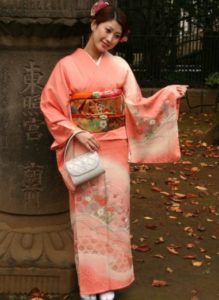 Traditional Japanese sandals always have a strap between the toes.. Don't try to wear these shoes with regular socks, nothing good will come of it. Either wear simple sandals or platform shoes, or buy a tabi – special socks with two compartments. The thumb and index toe are placed in the first, and all the remaining toes in the second.
Traditional Japanese sandals always have a strap between the toes.. Don't try to wear these shoes with regular socks, nothing good will come of it. Either wear simple sandals or platform shoes, or buy a tabi – special socks with two compartments. The thumb and index toe are placed in the first, and all the remaining toes in the second.
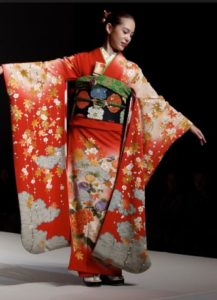 If you want to turn to European variations of kimono, then Instead of platforms, opt for pumps or sandals with thin heels or sandals. Mini dresses can be complemented with Greek lace-up sandals. In the cool season, ankle boots will come to the rescue.
If you want to turn to European variations of kimono, then Instead of platforms, opt for pumps or sandals with thin heels or sandals. Mini dresses can be complemented with Greek lace-up sandals. In the cool season, ankle boots will come to the rescue.
Recommended accessories include umbrellas, fans and bags that need to be carried in your hands. As a last resort, you can try on a clutch on a long chain or a model similar in principle, size and shape.
When you start choosing jewelry, remember that initially the kimono served to focus attention on a woman’s wrist and face shape. To demonstrate the beauty of the latter choose the right earrings that suit your shape, and bracelets and watches will accentuate your hands (don’t wear bracelets and watches at once, choose one thing).
Important! Don't wear a lot of jewelry at once. Kimonos, according to ancient traditions, should be complemented exclusively with hair clips. Reason: the outfit is so richly embroidered that it does not require any additional tricks for expressiveness.
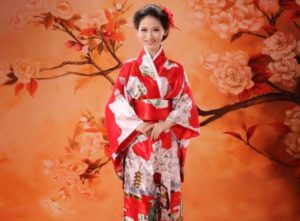 If minimalism is not your thing and you want to look catchy, bohemian, then complement the look with a hat (an alternative is a turban). Another interesting solution: to use a kimono not for its intended purpose, but as a cardigan or cape in an ethnic style. On the streets you can also meet girls who prefer to wear a wrapped kimono dress with jeans. By the way, layering for Japan is not a trend, but order and custom. And there is nothing strange or surprising in the simultaneous use of a kimono and some other things, because initially this item of clothing was worn over an undercoat.
If minimalism is not your thing and you want to look catchy, bohemian, then complement the look with a hat (an alternative is a turban). Another interesting solution: to use a kimono not for its intended purpose, but as a cardigan or cape in an ethnic style. On the streets you can also meet girls who prefer to wear a wrapped kimono dress with jeans. By the way, layering for Japan is not a trend, but order and custom. And there is nothing strange or surprising in the simultaneous use of a kimono and some other things, because initially this item of clothing was worn over an undercoat.


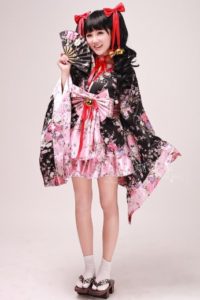



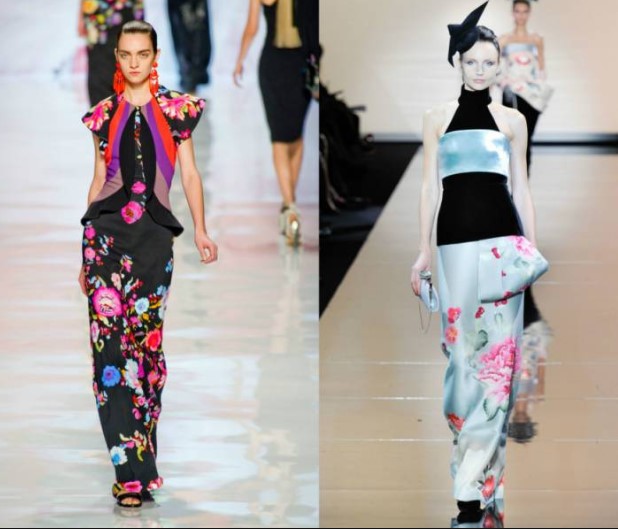



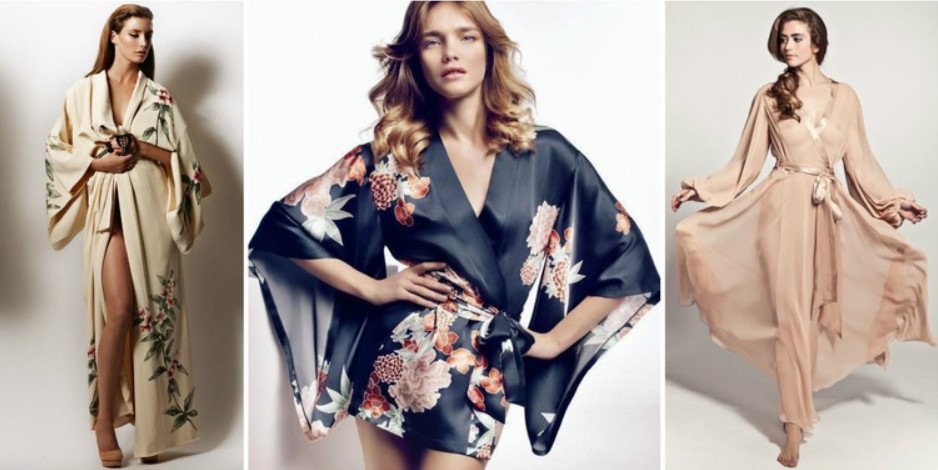
 0
0